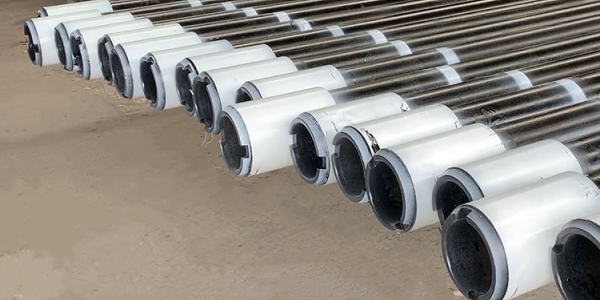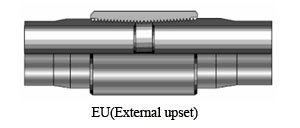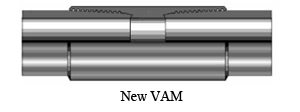Distinguishing the thread of an oil casing pipe is important for ensuring a proper and secure connection during the drilling and production process. The thread type of the casing pipe must match the thread type of the other components, such as wellheads, tubing, and other downhole tools. Here are the steps to help you distinguish the thread of an oil casing pipe.
- Check the Pipe Markings:
Start by examining any markings on the casing pipe. These markings often include important information about the pipe, including the thread type. Look for alphanumeric codes or labels that indicate the thread specification.
- Measure the Thread Pitch:
Use a thread pitch gauge to measure the distance between thread crests. Different thread types will have varying pitches. This can help you identify whether the thread is coarse or fine.
- Count the Thread TPI (Threads per Inch):
Count the number of threads within an inch of the pipe. This will give you the TPI, which can help in identifying the thread type.
- Inspect the Thread Profile:
Examine the shape of the thread profile. There are various thread profiles used in the oil and gas industry, such as API (American Petroleum Institute) threads, buttress threads, or premium threads. Each profile has a distinct shape that can be visually identified.
- Consult Documentation:
Refer to any documentation or records associated with the casing pipe. This documentation may specify the thread type and other details about the pipe.
- Use a Thread Identifier Tool:
Thread identifier tools are available for purchase, and they can help you determine the thread type of a casing pipe. These tools often have various thread profiles and sizes imprinted on them, and you can match the pipe's thread to the tool for identification.
- Ask the Manufacturer or Supplier:
If you have access to the manufacturer or supplier of the casing pipe, contact them for information about the thread type. They should be able to provide you with the exact specifications.
- Seek Expert Assistance:
If you are unsure about the thread type or if the thread is damaged or worn, it's a good idea to consult with experts in the field, such as wellhead or drilling equipment specialists. They can help identify the thread and provide guidance on compatibility.

Three Types Of Buckles With Schematic Diagrams:
1) EU(External upset)
EU is an outer thickened tubing buckle type. Among them, EUE (External Upset End) represents the outer upset end, EUP (External Upset Pin) represents the outer upset male buckle, and EUB (Extermal Upset Box) represents the outer upset female buckle.
In addition to using pin and box to indicate male and female buttons, the others indicate that there are 1. external thread; 2. male; 3. male thread. The female buckle has 1. female thread; 2. internal thread; 3. box; 4. box thread.

2) NU (Non-upset)
NU is a kind of non-upset oil pipe joint, in addition to no external upset, NU is usually 10 threads per inch and EU is 8 threads per inch. NUE represents a non thickening end or end thickening.

3) New VAM
This thread is substantially rectangular-shaped cross section, equal pitch intervals, little taper and no external upset. The VAM with excellent performance, high connecting strength and good sealing effectcan meet requirements of different service conditions. This thread is widely used in all kinds of special thread and it belongs to the high quality special thread. VAM follow the thread specification of API, thus inherits the advantages of high bonding strength. It improved Screw seal form in order to overcome the poor sealing performance.


 English
English Español
Español




 Tel : +86-18565811709
Tel : +86-18565811709 Email :
Email : 




 News
News




